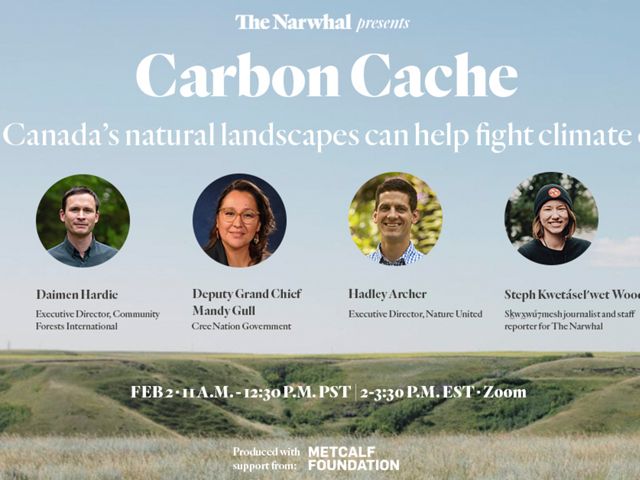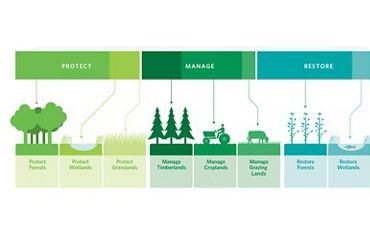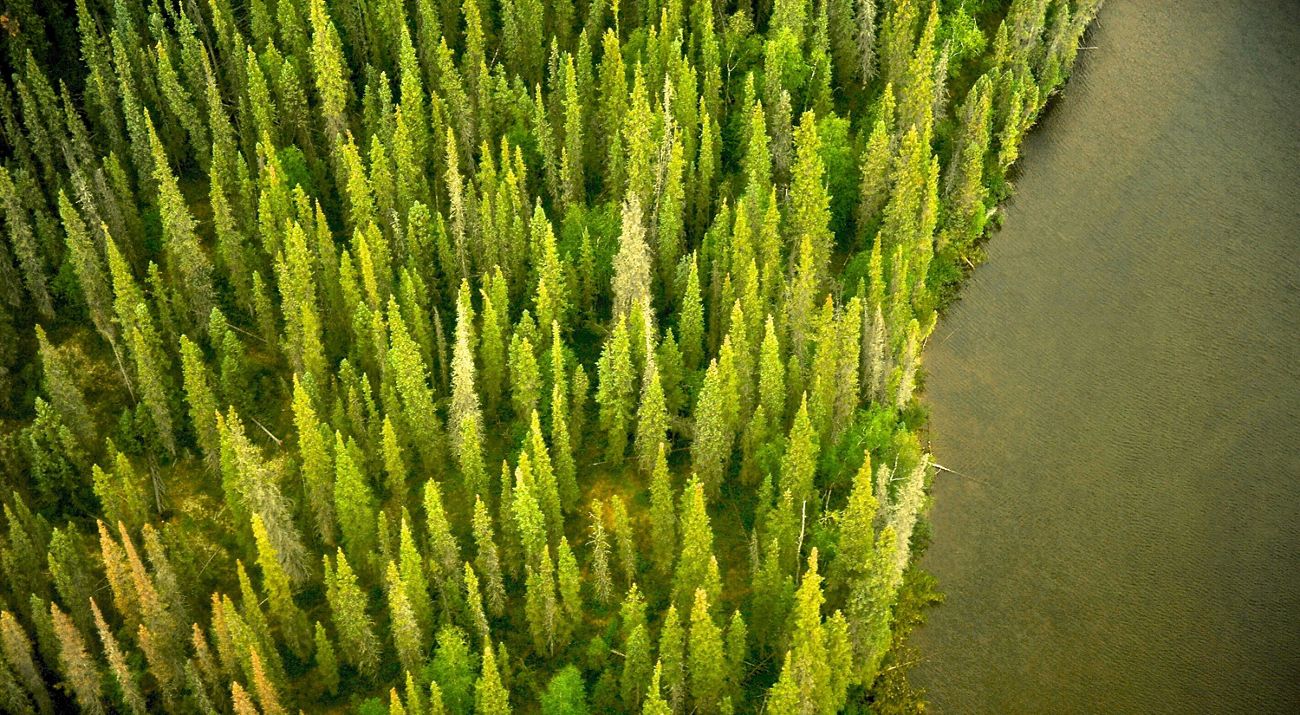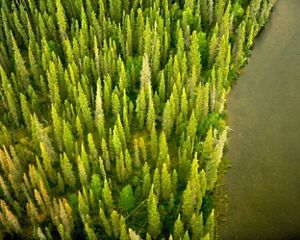Reasons for Hope
We have an historic opportunity to invest in a greener, more equitable future.
As the world grapples with the global pandemic, we are still in a global climate crisis—and the trendlines aren’t positive. Since countries signed the Paris Agreement in 2015, we’ve experienced the five warmest years on record.
But there is reason for hope.
We have an historic opportunity to invest in building back a global economy that is greener, more equitable and gets us on the path to dramatically reduced carbon emissions.
To avoid the worst climate projections and stay below 2 degrees warming, it’s well understood that we must phase out our use of fossil fuels. Perhaps less understood but equally important is that we must also harness the power of nature.


Research led by our global affiliate found that nature can deliver up to a third of global carbon emission reductions needed by 2030. Building on this finding, Nature United set out to determine the potential in Canada by leading a landmark study.
Working with 38 scientists from 16 different institutions, we evaluated a range of Natural Climate Solutions—land management practices that keep carbon in soil and plants and leverage the power of nature to sequester more carbon.

Go Deeper into Nature-Based Solutions
Hadley Archer was a featured expert The Narwhal's online event showcasing the role of Canada's natural landscapes in the fight against climate change. Read more and watch the panel
There are many nature-based climate solutions that represent proven, cost-effective approaches (like planting trees or protecting wetlands) that can be implemented across Canada to significantly mitigate carbon emissions over the next decade.
Not surprising, considering Canada has the second largest landmass of any country in the world. Our natural landscapes include more than a quarter of the world’s boreal forest, often referred to as the lungs of the planet since it holds twice the carbon per acre than tropical forests do.
And here’s the really cool thing.
Advancing Natural Climate Solutions not only provides a cost-effective and near-term path toward addressing our climate crisis, it also provides a host of other benefits that are important to Canadians: clean air and water, soil health and biodiversity conservation; green jobs and sustainable economic development for rural and forest dependent communities.
Quote

So, how do we harness the power of nature to achieve our ambitious climate, biodiversity and green economic recovery objectives?
Protecting land such as old-growth forests, grasslands and wetlands that are still functioning presents the most obvious way to deliver climate benefit. It’s simple: Keep the carbon in the trees and soil. Canada boasts one quarter of the world’s intact forests, where carbon has been stored in the trees, soil and peatbogs for thousands of years. Not surprisingly, there is lots of opportunity in Canada for protection to deliver climate benefit. In places like Clayoquot Sound, for example, we're working with local communities to protect the last stands of old-growth forest on Vancouver Island, which contain critical stores of irrecoverable carbon.
There is also tremendous potential in how we manage our forests and agricultural lands. By adopting farming practices that we know are good for the land and food production, like planting cover crops and efficient nutrient management, and enhancing tree growth and shifting to long-lived wood products in the forest sector, we can increase carbon captured by Canada’s agricultural and forest lands.
Finally, restoring ecosystems by planting trees or rewetting peatlands that have been drained or mined can put a lot of carbon back in the ground, not to mention provide a tremendous boost to biodiversity and local economies.
Together, these actions can deliver significant climate benefit by 2030 and even more by mid-century.
The federal government recently committed to invest $3.9 billion and to including Natural Climate Solutions in their increased 2030 emissions commitment, which will catalyze action on the ground.
However, to realize the full potential, it is essential that Indigenous governments lead. As an organization, we are committed to supporting Indigenous rights and building local capacity to help implement nature-based solutions as part of community land use visions. We hope to leverage Natural Climate Solutions to advance Indigenous Protected and Conserved Areas, support Indigenous Guardian programs and provide economic benefit for communities.
It is also critical to engage provinces and territories who have jurisdiction over land management decisions—and the private sector who can provide investment in solutions. In 2020, the Bezos Earth Fund committed $100 million to advance our work toward carbon sequestration and Indigenous-led conservation. Investments like this will help us catalyze on-the-ground projects that leverage nature's potential.
Capitalizing on the opportunity will require not just the buy-in from foresters, farmers and ranchers, but active adoption.
Natural Climate Solutions are not the only answer to our climate crisis, but they are a critical piece of the puzzle.
As we begin this year, I'm hopeful about what the future holds. I'm looking forward to seeing our study published and sharing broadly the potential for Natural Climate Solutions in Canada. And I'm ready to start leveraging this new data and our history of working in partnership with governments, Indigenous communities, and the private sector to make the case for nature now.



